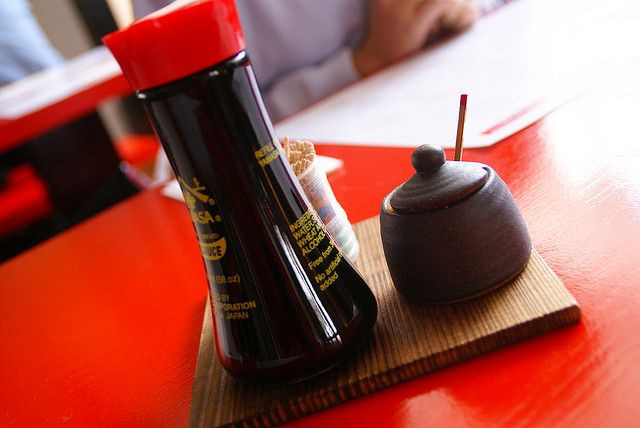Soy Sauce The Key To HIV Treatment? Flavor Compound 70 Times More Potent Than Tenofovir

A popular compound used in soy sauce as a flavor enhancer, known as EFdA, has been shown 70 times more effective than the first-line HIV drug Tenofovir, a new study finds.
EFdA has become a point of interest among HIV researchers due to its efficacy and resistance to the virus. By contrast, Tenofovir, normally used as the primary antiretroviral drug in HIV therapy, has the notorious property of losing effectiveness over time. University of Missouri School of Medicine researchers believe their latest study could offer pharmacological approaches using EFda that avoid this hurdle.
"EFdA, the molecule we are studying, is less likely to cause resistance in HIV patients because it is more readily activated and is less quickly broken down by the body as similar existing drugs,” explained Stefan Sarafianos, associate professor of molecular microbiology and immunology, in a statement.
According to the Centers for Disease Control and Prevention, at the end of 2009, roughly 1.1 million people over the age of 13 were living with HIV in the U.S. That includes some 207,600, or 18.1 percent of those people, whose infections hadn’t been diagnosed. While definite advances have been made in the field, HIV vaccine research is spotty at best. Perhaps the most recent sign of progress is the case of a baby born with HIV earlier this year, after contracting it from her mother, and entering remission following treatment within hours of delivery.
To fight HIV, clinicians typically rely on one type of antiretroviral drug. EFdA, in conjunction with eight other compounds designed to fight HIV, are in a class of compounds known as nucleoside reverse transcriptase inhibitors (NRTI). When the virus encounters these NRTI, it gets confused. It interprets the compound’s presence as one of its own building blocks. This “hijacking” essentially turns the virus self-destructive, replicating continuously all while it actively destroys itself.
Interestingly, EFdA was first discovered for this purpose in 2001, after Japanese soy sauce manufacturers were searching for a way to enhance the flavor of their product. The finding spurred over a decade of follow-up research, now producing a greater molecular understanding in the latest study. Using nuclear magnetic resonance spectroscopy (NMR), researchers were able to fit the molecule’s pieces together like a puzzle.
Moving forward, Sarafianos and his team are currently at work on testing EFdA and like compounds for their therapeutic properties in conjunction with the pharmaceutical company Merck. Sarafianos believes the structure of the compound is critical to its success because of the “lock-and-key” mechanism that the NRTI recognize.
"EFdA works extremely well on HIV that is not resistant to anti-AIDS drugs,” he said. “It also works even better on HIV that's become resistant to Tenofovir."
Source: Zhang W, Parniak M, Sarafianos S, Cost M, Rohan L. Development of a vaginal delivery film containing EFdA, a novel anti-HIV nucleoside reverse transcriptase inhibitor. Pharmaceutical Nanotechnology. 2014.



























